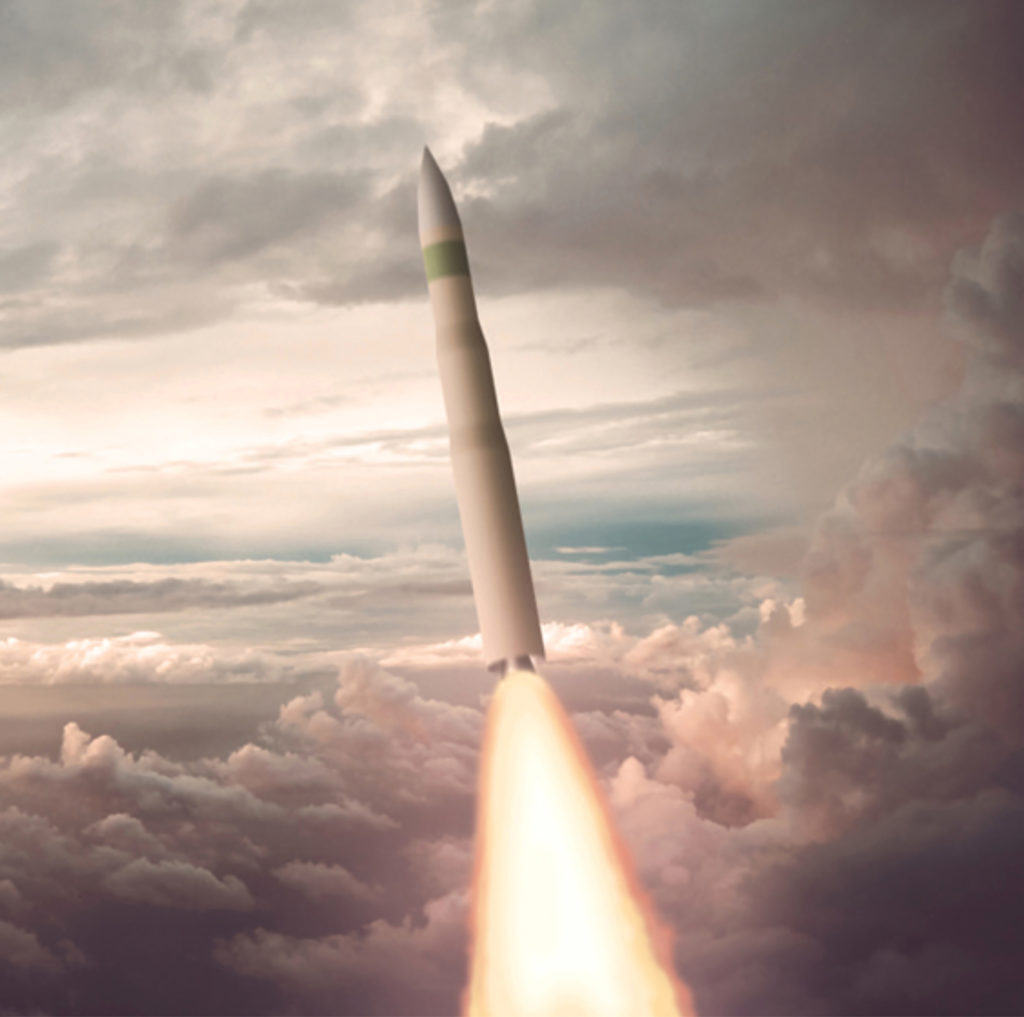The head of a new office created to oversee the modernization of the Air Force’s intercontinental ballistic missile fleet said schedule changes for the Sentinel program are due “at the end of the year” from contractor Northrop Grumman.
While concern has grown over potential delays, Brig. Gen. Colin J. Connor, head of Air Force Global Strike Command’s new ICBM Modernization Directorate, declined to share details at an event hosted by the Advanced Nuclear Weapons Alliance Deterrence Center.
“It would be premature for me at this point to talk anything about a delay and get in front of the acquisition community,” Connor said Nov. 29.
But Connor did acknowledge the scale and scope of the Sentinel project, which Air Force Secretary Frank Kendall has previously called among the most ambitious and difficult the service has ever undertaken.
“It is the most complex thing we’ve done, I’ll say, since the 1960s,” Connor said. “And I would say even then, because of technology that we’re trying to equip, whether it’s [nuclear command, control, and communications] technology, digital engineering aspects to it, it’s even different than what was done in the 60s.”
Kendall said earlier in November that Sentinel is “quite honestly, struggling a little bit,” and in August, the Government Accountability Office reported that Sentinel was already a year behind schedule. Initial operational capability is expected between April and June 2030, GAO said—skating close to the no-fail IOC of September 2030 required by U.S. Strategic Command.
The GAO report criticized the Sentinel program office, saying the master schedule’s deficiencies meant it not be used to effectively manage the program.
“The prime contractor and the program are conducting a high-level review and discussing potential changes to the schedule,” according to the report, which was based on data from January 2023.
Months later, Connor indicated an update is coming soon.
“As we await a schedule from Northrop Grumman to arrive, we expect that to arrive at the end of the year,” he said.
Connor also noted that Northrop and the Air Force continue to refine cost estimates, acknowledging that initial estimates are likely to too low.
“Not to be flippant, but show me a program that doesn’t have higher costs at the end than what were initially projected,” Connor said. Inflation, the changed economy after the COVID-19 pandemic, and the significant technological challenge at hand, are all cost factors.
Amid such challenges, Global Strike Command recently stood up the new ICBM modernization directorate, a spokesman told Air & Space Forces Magazine. Labeled the “A10,” in line with the Air Staff’s A10 directorate for strategic deterrence and nuclear integration, the office aligns with the “A Staff” structure Air Force leadership has sought to promulgate across the service.

It also fulfills a requirement in the 2023 National Defense Authorization Act that the Air Force establish an ICBM Modernization Site Activation Task Force to “oversee and coordinate” the planning, construction, and installation that will go into getting Sentinel online while keeping the existing Minuteman III missiles viable.
“We are working with both the contractor and the Air Force Nuclear Weapons Center from the acquisition standpoint, to work the operational fielding of the system, the transition between two systems,” Connor said. “The role for Global Strike A10 … is to facilitate that, from an organize, train, and equip perspective; to make sure that the Airmen in the field have what they need, working both with the acquisition community and the contract force that will be doing a lot of the work out there, as we work this transition.”
Sentinel is not merely a new missile, Connor said. “We’re not putting ‘Minuteman IV’ in the ground,” Connor said. “It’s a different missile that’s more capable.”
Also coming are new launch control centers with equipment adopted or adapted from commercial solutions, and new nuclear command, control, and communications capabilities that will bring today’s decades-old technology up to a “more modern approach,” he said.
“We’re not just gutting the launch facilities, repainting them, and putting the same equipment back in,” Connor said. It’s going to be a whole new nuclear enterprise.
